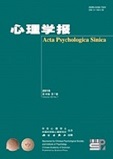In order to explore the reciprocal relationships between head teachers’ negotiation management behavior and teacher-student relationship and students’ externalizing problem behavior, 1407 primary school students from grade 4 to grade 6 were investigated by questionnaires at three different periods in one school year. The results of cross-lag analysis show that: (1)Head teachers’ negotiation management behavior drove the positive interaction cycle; head teachers’ negotiation management behavior (T1) reduced students’ externalizing problem behavior (T2), improved the closeness of the teacher-student relationship(T2), and decreased the conflicts of the teacher-student relationship (T2), which further affected head teachers’ negotiation management behavior (T3), teacher-student relationship (T3) and students’ externalizing problem behaviors (T3). (2) Students’ externalizing problem behaviors drove the negative interaction cycle; students’ externalizing problem behaviors (T1) reduced head teachers’ negotiation management behavior (T2), decreased the closeness of the teacher-student relationship (T2), and increased the conflicts of the teacher-student relationship (T2), which further affected students’ externalizing problem behaviors (T3), teacher-student relationship (T3), and head teachers’ negotiation management behavior (T3). The results support the Transactional Model, and suggest that head teachers need to be aware of the negative “driver” role of students’ externalizing problem behaviors, and consciously use the positive “driver” role of negotiation management behavior to break the negative cycle driven by students’ externalizing problem behaviors.




